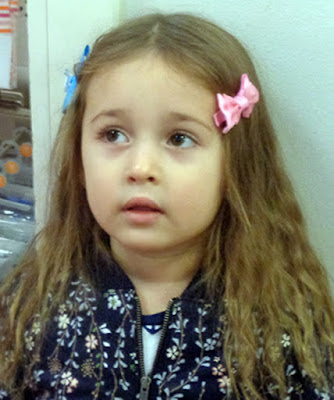It's become a Halloween tradition for the Rolling Crone to re-post the story told to me by President Reagan of his own encounters with White House ghosts and other haunting happenings experienced there through the ages. Wonder if the Trumps have encountered any of these ghouls as yet?
Ever since the White House was first occupied in 1800, there have been
rumors of hauntings, but I got this story direct from the President. No,
not President Obama (or The Donald). I first heard about the White House ghosts
directly from the lips of Ronald Reagan.
It was March 18, 1986, and my husband Nick and I had been invited to a state dinner in honor of Canadian Prime Minister Brian Mulroney. The State Dining room was filled with gold candlesticks, gold vermeil flatware and vermeil bowls filled with red and white tulips. I had the great privilege of being seated at the President’s table along with Chicago Bears’ running back Walter Payton; the Canadian Prime Minister’s wife Mila Mulroney; the president of the Mobil Corporation; Donna Marella Agnelli, wife of the chairman of Fiat; Burl Osborne, the editor of the Dallas Morning News, and Pat Buckley, wife of William Buckley.
The President, a brilliant storyteller, entertained the table throughout the meal and the story I remember best was about his encounters with the White House ghostly spirits. Here is how I wrote it later in an article about the dinner for the Ladies’ Home Journal: “According to the President, Rex, the King Charles Cavalier spaniel who had recently replaced Lucky as First Dog, had twice barked frantically in the Lincoln Bedroom and then backed out and refused to set foot over the threshold. And another evening, while the Reagans were watching TV in their room, Rex stood up on his hind legs, pointed his nose at the ceiling and began barking at something invisible overhead. To their amazement, the dog walked around the room, barking at the ceiling.
'I started thinking about it,' the President continued, 'And I began to wonder if the dog was responding to an electric signal too high-pitched for human ears, perhaps beamed toward the White House by a foreign embassy. I asked my staff to look into it.'
The President laughed and said, 'I might as well tell you the rest. A member of our family [he meant his daughter Maureen] and her husband always stay in the Lincoln Bedroom when they visit the White House. Some time ago the husband woke up and saw a transparent figure standing at the bedroom window looking out. Then it turned and disappeared. His wife teased him mercilessly about it for a month. Then, when they were here recently, she woke up one morning and saw the same figure standing at the window looking out. She could see the trees right through it. Again it turned and disappeared."
After that White House dinner, I did some research and discovered that half a dozen presidents and as many first ladies have reported ghostly happenings in the White House. It’s not just the ghost of Lincoln that they see, although he tops the hit parade. He caused Winston Churchill, who was coming out of the bathroom naked but for a cigar when he encountered Lincoln, to refuse to sleep there again. And Abe so startled Queen Wilhelmina of the Netherlands that she fell into a dead faint when she heard a knock on the door and opened it to find Lincoln standing there.
I also learned that the Lincoln bedroom was not a bedroom when Lincoln was President—it was his Cabinet Room where he signed the Emancipation Proclamation.
It’s well known that Abraham Lincoln and his wife held séances in the White House, attempting to contact the spirit of their son Willie, who died there and who has been seen walking the halls.
The ghost of Dolley Madison, wife of James Madison, appeared often in the Rose Garden, which she planted. There is even reportedly a Demon Cat in the White House basement that is rarely seen. When it does appear, it is foretelling a national disaster. While the Demon Cat may at first look like a harmless kitten, it grows in size and evil the closer one gets. A White House guard saw it a week before the stock market crash of 1929 and it was also reportedly seen before Kennedy’s assassination in 1963.
Abigail Adams’ ghost has been seen hanging laundry in the East Room—she appeared frequently during the Taft administration and as late as 2002 and is often accompanied by the smell of laundry soap.
Lincoln himself told his wife he dreamt of his own assassination three days before it actually happened. Calvin Coolidge’s wife reported seeing Lincoln’s ghost standing at a window of the Oval Office, hands clasped behind his back gazing out the window (just as Reagan’s daughter saw a figure in a similar pose.) Franklin Roosevelt’s valet ran screaming from the White House after seeing Lincoln’s ghost . Eleanor Roosevelt, Ladybird Johnson and Gerald Ford’s daughter Susan all sensed Lincoln’s presence near the fireplace in the Lincoln Bedroom.
I’d love to find out if the Obamas ever encountered any ghostly knockings, or if their dog Beau suffered the same alarming anxiety attacks as Reagan’s dog Rex. Today, as the portals between this world and the other world swing open, I suspect the White House will be hosting a ghostly gala of the illustrious dead. I wonder, if Trump wandered down to the basement, would he encounter the Demon Cat?
(If you have any personal paranormal experiences to report, let me know about them at: joanpgage@yahoo.com )




















































